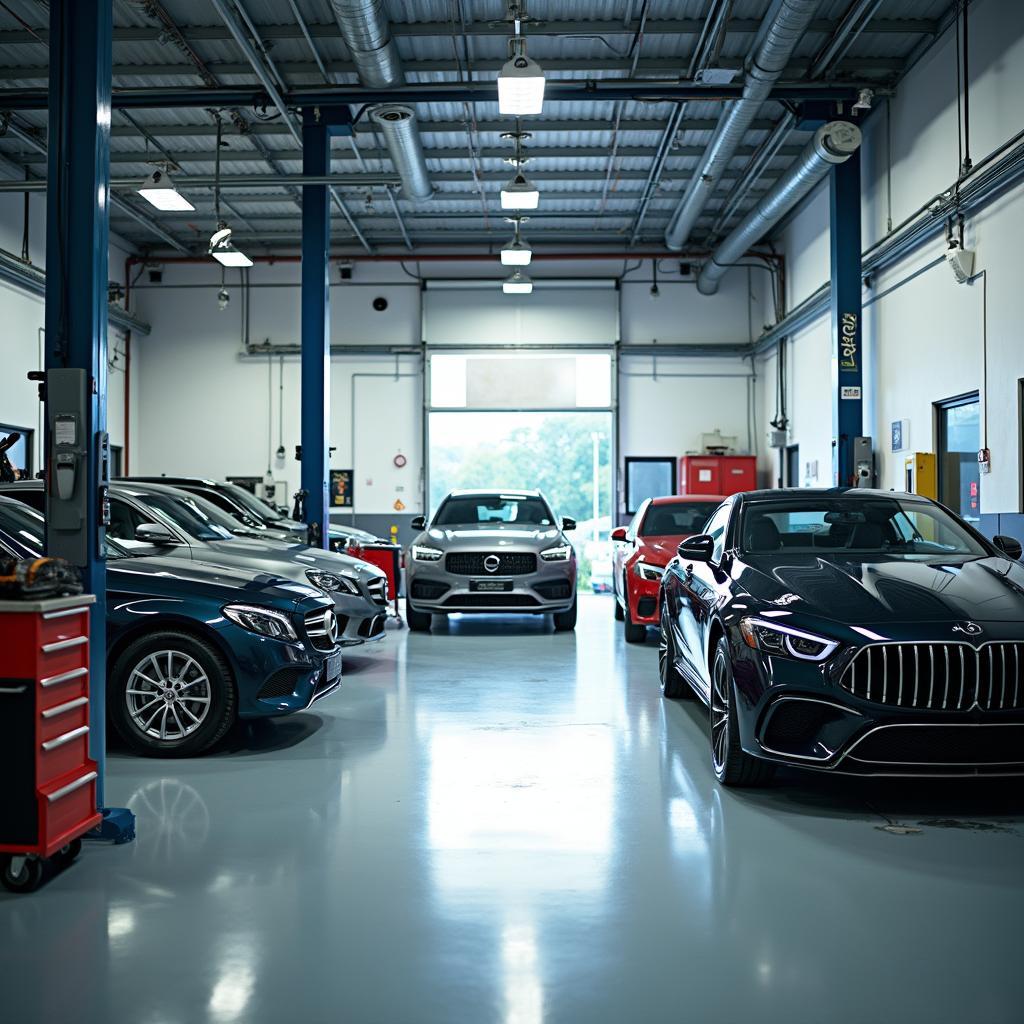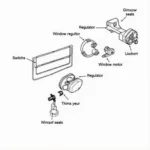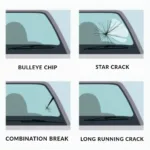Finding a reliable shop for local car body repairs can feel overwhelming. Whether you’ve been in a fender bender or need to address some dents and dings, understanding your options and the repair process can save you time, money, and stress. This comprehensive guide will walk you through everything you need to know about local car body repairs, from finding the right shop to understanding common repair procedures.
Why Choose Local for Car Body Repairs?
Opting for local car body repairs offers several advantages. Supporting local businesses directly benefits your community and often translates to personalized service and competitive pricing. Local shops are more invested in building lasting relationships with their customers, leading to a greater emphasis on quality work and customer satisfaction.
Finding the Right Shop for Your Needs
Finding a reputable shop is the first step towards a seamless repair experience. Start by asking friends, family, and colleagues for recommendations. Online reviews and ratings on platforms like Google My Business and Yelp can provide valuable insights into customer experiences.
When evaluating potential shops, consider:
- Certifications and affiliations: Look for shops certified by reputable organizations like I-CAR (Inter-Industry Conference on Auto Collision Repair) or ASE (National Institute for Automotive Service Excellence). These certifications indicate a commitment to ongoing training and industry standards.
- Experience and specialization: Some shops specialize in specific makes or models or offer expertise in particular repair types like dent removal or paintless dent repair (PDR).
- Customer service: Pay attention to how responsive and helpful the shop is during your initial interactions. A good shop will be transparent about their processes, pricing, and estimated repair timelines.
Understanding Common Car Body Repair Procedures
Car body repairs encompass a wide range of services, from minor dent removal to major collision repairs. Some common procedures include:
1. Dent Removal:
- Paintless Dent Repair (PDR): Ideal for minor dents and dings, PDR involves specialized tools to massage the metal back to its original shape without affecting the paint.
- Traditional Dent Repair: For more severe dents, technicians use body fillers to reshape the damaged area, followed by sanding, priming, and painting.
2. Bumper Repair:
- Plastic Bumper Repair: Depending on the severity, plastic bumpers can be repaired using heat welding, adhesives, or fillers.
- Bumper Replacement: In cases of extensive damage, a complete bumper replacement might be necessary.
3. Frame Straightening:
Frame damage often occurs in collisions and requires specialized equipment to pull the frame back to its factory specifications, ensuring the vehicle’s structural integrity and safety.
4. Paint Repair:
- Spot Painting: For minor scratches or paint chips, spot painting involves blending the new paint with the surrounding area for a seamless finish.
- Panel Painting: Larger areas of damage might require painting an entire panel for a consistent color match.
5. Auto Glass Repair and Replacement:
- Windshield Repair: Small chips and cracks can often be repaired using a resin injection process.
- Windshield Replacement: Larger cracks or damage within the driver’s line of sight necessitate a complete windshield replacement.
What to Expect During the Repair Process
Once you’ve chosen a shop, the repair process typically involves:
- Damage Assessment: A thorough inspection to identify all damage and determine the necessary repairs.
- Estimate: The shop will provide a written estimate outlining the cost of parts, labor, and estimated repair time.
- Insurance Claims (if applicable): If you’re filing an insurance claim, the shop will often work directly with your insurance company to handle the necessary paperwork and approvals.
- Repairs: The technicians will carry out the agreed-upon repairs, keeping you informed of any unexpected issues or delays.
- Quality Control: A final inspection ensures all repairs meet quality standards before you pick up your vehicle.
Tips for a Smooth Car Body Repair Experience
- Document the Damage: Take clear photographs of the damage before taking your car to the shop.
- Get Multiple Estimates: Don’t hesitate to get estimates from multiple shops to compare pricing and services.
- Ask Questions: Don’t be afraid to ask your chosen shop about their experience, guarantees, and the specific repair procedures they’ll use.
- Stay Informed: Communicate openly with the shop throughout the repair process and stay updated on the progress.
Conclusion
Local car body repairs are often the ideal solution for restoring your vehicle’s appearance and safety. By taking the time to find a reputable shop and understanding the repair process, you can ensure a positive experience and get back on the road with confidence. Remember to prioritize quality, transparency, and open communication when choosing a shop for your car body repair needs.



